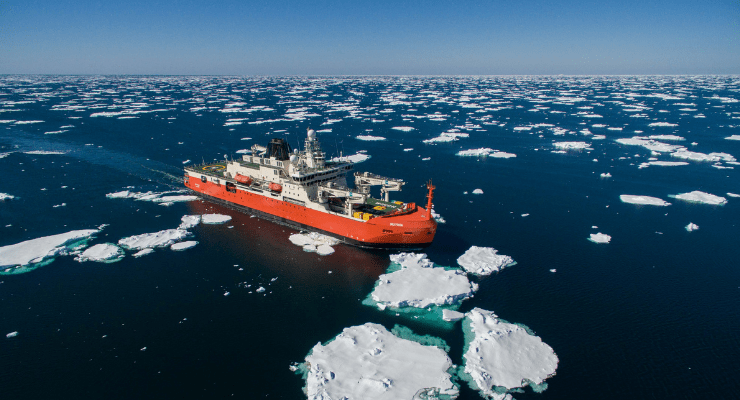
“Trust” is what the Antarctic Treaty System turns on. It is foundational to international cooperation and collaboration in scientific research which the ATS was crafted to facilitate. Australia’s recent $800 million pledge to bolster its Antarctic influence will not plug the deficit of trust that has eroded since 1961 when the Antarctic Treaty came into force.
The Cold War-era agreement has none the less endured, weathering strategic competition and iterations of great power politics. But the efficiency of the system is increasingly under pressure and facing challenges relating to the future of its consensus-driven governance mechanism.
The international strategic environment is departing rapidly from the structure it held in the 1950s when the ATS was built. Once a peace deal brokered to ease Soviet and US strategic concerns, the system now accommodates nations like China. Beijing is unrecognisable from its 1983 self which ratified the ATS, with national strategic priorities of its own, enhanced power and resource ambitions that don’t fully align with ATS principles.
Of course, strategic competition in Antarctica is not new — the players are different, and the technologies are advanced to the point where treaty grey zones are easy to manipulate and exploit. What constituted “peaceful activity” and “war” or “militarisation” is rather different today.
Status quo is precarious
Treaty parties are unsure of each other’s intentions in the Antarctic in the long term. While it is the case that maintaining the ATS — the status quo — is in the interest of all 54 parties (for it facilitates free and fair access to the continent), as we have seen in Ukraine in recent days the status quo is precarious and vulnerable to shifts. This is where trust matters.
The Australian government has adopted a strategy focused on protecting the integrity of the ATS and ensuring this existing status quo system remains in place. After all, the ATS affords Australia a significant stake in the continent (it “freezes” any debate or contest over its huge territorial claim) that it otherwise has no way of defending should it ever be required to. In defence spending terms, the ATS offers a cost-effective solution. Until it does not.
But Australia’s historical legacy and vast territorial claim are not a given. To bolster trust in the ATS among parties, the government has announced another tranche of Antarctic investments. Much of the investment goes to ensuring enhanced Australian presence in the Australian Antarctic Territory.
Presence is power, in that real-time monitoring of state action in Antarctica will allow Australia to conduct bolstered compliance operations. The problem is that compliance is tricky in Antarctica given no real enforcement avenues exist within the ATS. Here, trust matters.
In the end, it will take only one country to simply “opt out” of the treaty to secure its interests and bring down the system. This is not a remote possibility. This is where capability matters. These recent Antarctic investments include helicopters to reach inland in Australia’s territory. Useful — as long as weather is operationally kind — and, of course, their use will rely on the assumption that RSV Nuyina (from which they are to be launched) happens to be near Antarctica.
Overall these new Antarctic commitments, tabled in an election year, won’t do much in the way of protecting Australia’s Antarctic claim. Indeed, if the treaty “failed”, we’d be back to the seven claimant states and the related legitimacy debates.
Might equals right?
Nothing undertaken since the ATS came into force (new buildings, new icebreakers, presence and footprint included) can be taken into consideration of a state’s Antarctic claim.
Did Australia do enough to establish a claim between 1933, when sovereignty of the AAT was “gifted’ to Australia from Britain, and 1961 when the ATS came into force? Questions as to US responses are also apt, since Washington rejects all claims and asserts a right to make its own (its base at the geographical South Pole, of course, indicates symbolically US Antarctic footing).
Of course, debating the legitimacy of dormant claims assumes that states like China and Russia would engage with international legal avenues like the International Court of Justice. Surely these states would simply opt for the might equals right approach, and indeed both states are far ahead of Australia in terms of military capabilities for Antarctica, or the polar regions more broadly. Australia has one sole icebreaker, Russia has nuclear icebreakers, and China has an indigenous icebreaker-building industry.
Oversight, consistent presence and norms-bolstering in Antarctica are essentially the only viable options Australia has to future-proof the ATS, which in turn protects the AAT. Questions remain though: how much can Russia and China get away with in the Australian Antarctic Territory? Will Australian drones do much to deter unruly Antarctic behaviour? And though we might soon be able to “verify” compliance, what good is trust in a system if we cannot enforce it?








Australia claims and polices an Exclusive Economic Zone off its frozen claim to the continent and islands. Resources there include whales, seals, krill and of course many species of fish. That policing requires fast boats rather than icebreakers. See for example, “Antarctic chase ends with arrests”.
Wasn’t ‘trust but verify’ once a diplomatic given?